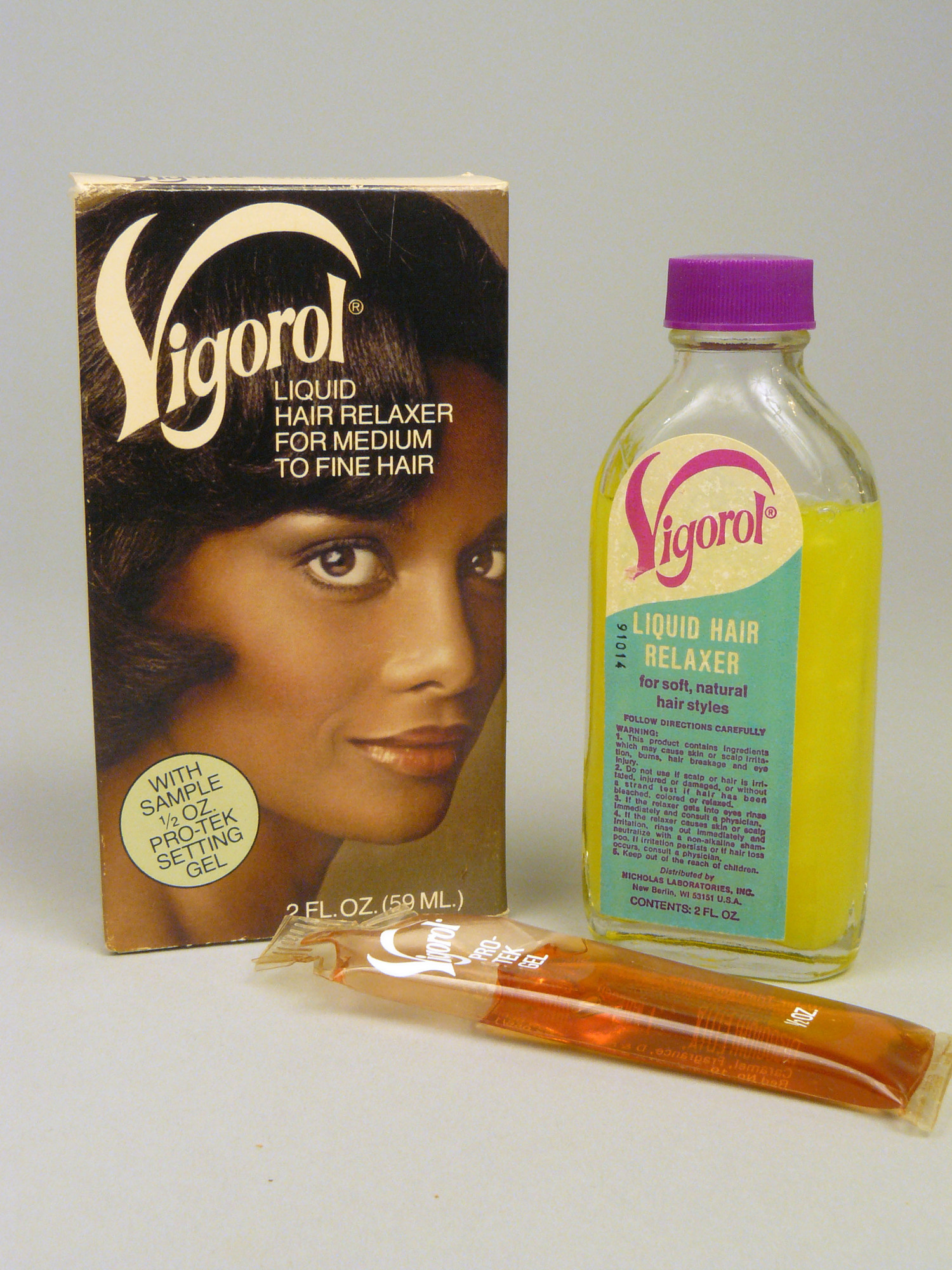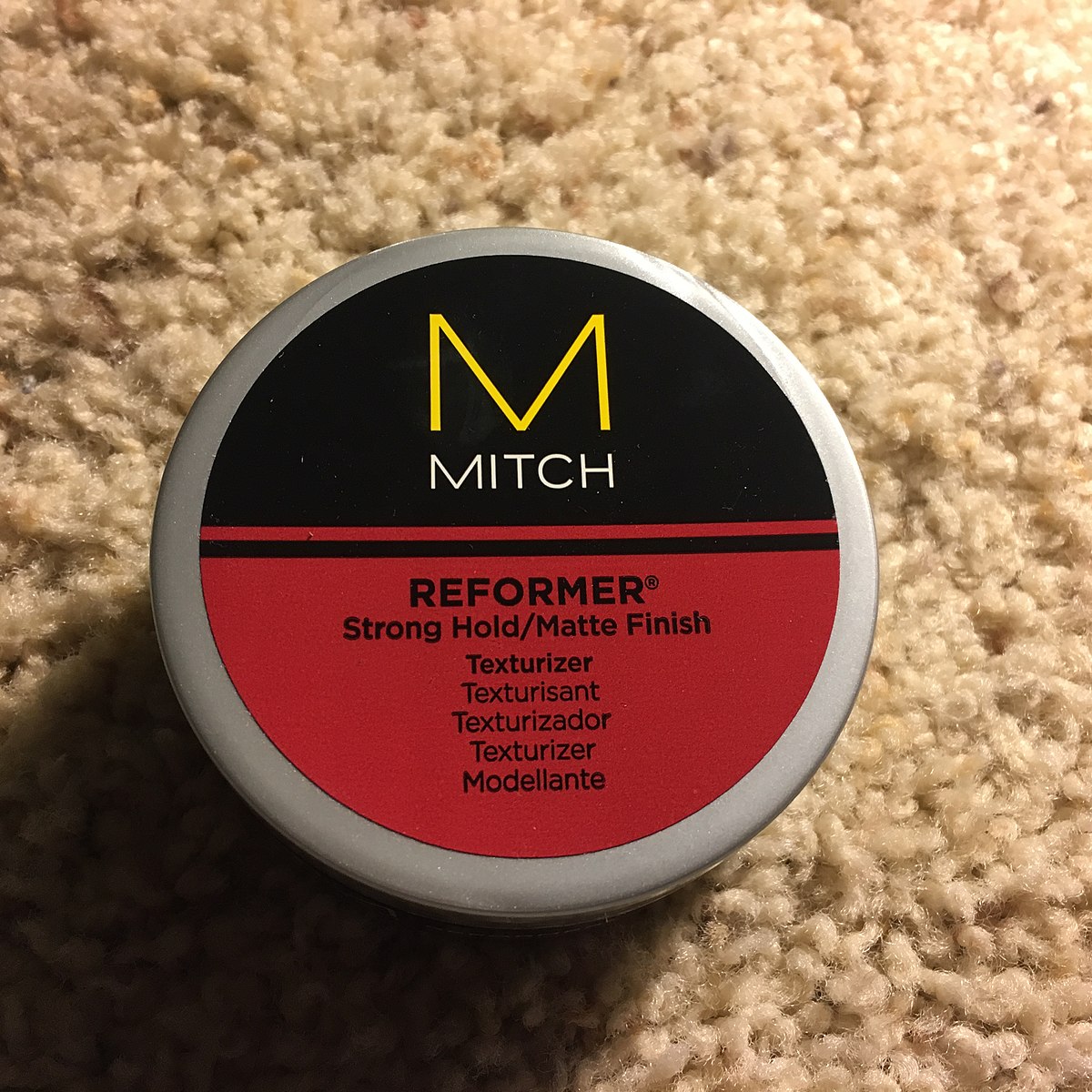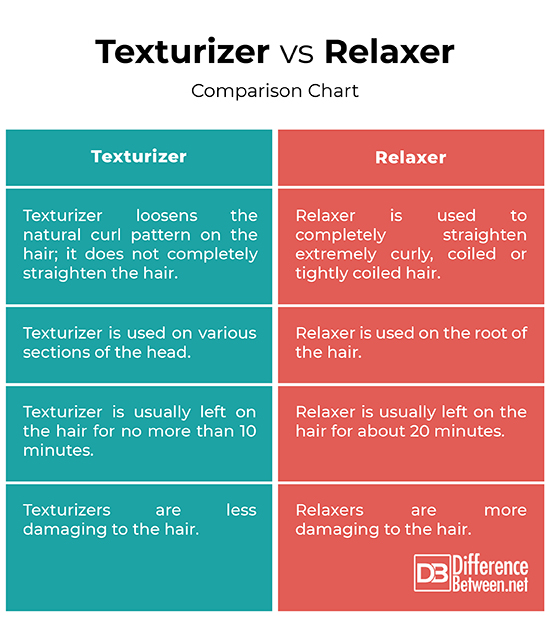Difference Between Texturizer and Relaxer
If you prefer a chemical-based procedure to style your natural curls, you’ve got a couple of options: a texturizer or a relaxer. While both are chemical-based options to straighten your hair, a texturizer does not completely straighten your hair; instead, it loosens the natural curl pattern on your hair. A relaxer completely straightens your hair. Let’s take a look at the differences between the two.

What is Relaxer?
A relaxer is kind of a lotion or a cream used on the root of your hair to easily manage and straighten the hair. It is a complex chemical designed to straighten extremely curly, coiled or tightly coiled hair by breaking down the natural structure of the hair. This chemical process inherently strips the hair of protein, the building block of hair structure. It chemically alters the texture of the hair, but the result varies depending on the hair type. A relaxer typically helps keep your hair straight for about six to eight weeks. Hair relaxers are commonly available in two types: Lye and No-Lye relaxers. Lye-based relaxers contain sodium hydroxide as an active straightening agent, and tend to be more irritating on the scalp. No-Lye relaxers contain calcium hydroxide as the active ingredient, and tend to work best on sensitive scalps.

What is Texturizer?
A hair texturizer is a chemical-based procedure that works to smooth and defrizz your hair while loosening up those natural curls and not completely straighten them up. A texturizer is a light version of a relaxer which softens the hair and processes just long enough to reduce the curl pattern. It releases your natural curl pattern and adds softness and sheen to your hair. Texturizing involves a special relaxing technique that allows the stylist to achieve a softer, gentle look with your natural curl pattern. The stylist applies a mild or regular-strength relaxer to various sections of hair and lets it sit for no more than 10 minutes before rinsing. The chemical shouldn’t be left on for too long (5-10 minutes). If left on for more than 10 minutes, the hair will become straight.
Difference between Texturizer and Relaxer
Type
– Both texturizers and relaxers are chemical-based hair treatments that work to straighten or soften the natural curls of highly textured hair. Both are used to remove curls from very curly or kinky hair. A relaxer is used to completely straighten extremely curly, coiled or tightly coiled hair by breaking down the natural structure. A texturizer, on the other hand, is lower concentration versions of a relaxer used to gently soften the curl without completely straighten them up.
Time
– One of the primary differences between the two chemical hair treatment processes is the time. The texturizers are applied to various sections of the head and usually left on the hair for no more than 10 minutes. The chemicals should be left on for 5 to 10 minutes. If left on for more than 10 minutes, the hair will become straight. The relaxers, on the other hand, are used on the root of the hair and left on for about 20 minutes. Texturizers are designed to stay on the hair for less time, and tend to be less harsh than relaxers.
Effect
– Texturizers are tend to be less potent than traditional relaxers, so theoretically speaking, they are less damaging to the hair. While both contain chemicals that alter the structure of the hair, a relaxer inherently strips the hair of protein, thereby over-processing it and weaken it over the time. It may lead to dryness, breakage or damage. Touch-ups also need to be applied every three months. No-lye relaxers are actually harsh and can be very drying to the hair.
Texturizer vs. Relaxer: Comparison Chart

Summary
Although, both texturizers and relaxers are chemical-based processes used to straighten the hair, relaxers provide a more permanent way to straighten extremely curly, coiled or tightly coiled hair. However, relaxers alter or change your natural texture, breaking down the natural structure of the hair. Texturizers are usually less potent than relaxers and tend to be less harsh, allowing you to have better control when you comb and style your hair. At the end of the day, no matter which ever you choose for hair styling, it’s important to take care of your hair afterward with proper moisturizing creams and treatments. Besides, both are chemical based treatments and chemicals can be damaging to the hair.
Is a texturizer good for natural hair?
Most hair products including texturizers contain chemicals that can make your hair look extremely gorgeous or your hair extremely damaged. While many companies market their products as natural products, most of them contain sodium or calcium hydroxide.
Is a texturizer better than a relaxer?
Both texturizers and relaxers are chemical based procedures that work to relax the curl. But with relaxers, you have fewer options when it comes to the many styles you can wear. Texturizers are a good option for people who want to easily switch between straight and curly styles.
Can you switch from texturizer to relaxer?
The effects of both texturizers and relaxers are permanent. You cannot apply a relaxer onto a texturized hair
What does texturizer do to your hair?
A texturizer turns your existing curl pattern into smooth loose curls without completely straightening the hair, thus creating a more natural look.
- Difference Between Caucus and Primary - June 18, 2024
- Difference Between PPO and POS - May 30, 2024
- Difference Between RFID and NFC - May 28, 2024
Search DifferenceBetween.net :
Leave a Response
References :
[0]Draelos, Zoe Diana . Cosmetic Dermatology: Products and Procedures. West Sussex, United Kingdom: Wiley-Blackwell, 2015. Print
[1]Brown, Angela Hughes. How to Get the Healthy Back in Your Hair: Rekindling Healthy Hair. Indiana, United States: AuthorHouse, 2009. Print
[2]Costa, Diane De. Textured Tresses: The Ultimate Guide to Maintaining and Styling Natural Hair. New York, United States: Simon and Schuster, 2007. Print
[3]Johnson, Dale H. Hair and Hair Care. Florida, United States: CRC Press, 1997. Print
[4]Image credit: https://ids.si.edu/ids/deliveryService?id=NMAH-AHB2011q05663-000001
[5]Image credit: https://commons.wikimedia.org/wiki/File:Hair_gel_2018-06-08_1.jpg
